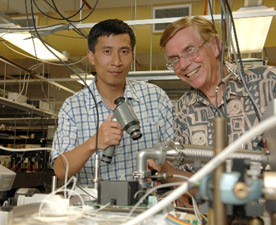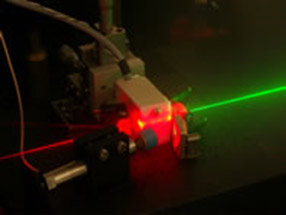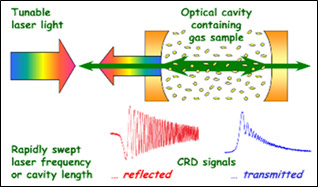Molecular and Optical Physics Laboratory
About MOPL

The Molecular and Optical Physics Laboratory (MOPL) is an integral part of Macquarie University's MQ Photonics Research Centre (incorporating the former Centre for Lasers and Applications, established in 1988 as an Australian Commonwealth Special Research Centre). MOPL occupies a well-equipped laboratory in the basement of building F7B. The facility was previously known as the Chemistry Laser Applications Laboratory until 2003, when the research group leader, Brian Orr, retired as Professor of Chemistry and became Professor of Molecular and Optical Physics.

Research @ MOPL
MOPL's research interests cover a range of topics in molecular and optical physics, applying laser and spectroscopic techniques – notably energy-transfer processes, molecular spectroscopy, photochemistry, chemical analysis, nonlinear optics, cavity-enhanced optical techniques, and laser-based instrumentation. Recent work has focused on narrowband tunable optical parametric oscillators, novel forms of cavity-ringdown spectroscopy, high-fidelity frequency transfer over optical fibres, rotationally resolved collision-induced molecular energy transfer, and high-resolution atomic spectroscopy.

The MOPL group makes efforts to develop, patent, and commercialise laser-based instruments for spectroscopic sensing in industry, medicine, agriculture, and the environment.
MOPL members, Professor Brian Orr and Dr Yabai He, have developed several items of laser-based intellectual property, covered by four patent applications.
They also collaborate extensively with researchers in other universities (both in Australia and abroad), industry and government institutions.
Recent publications from the MOPL research group appear in journals such as Optics Letters, Optics Express, Journal of the Optical Society of America B, Applied Optics, Applied Physics B, Journal of Chemical Physics, Journal of Physical Chemistry, Journal of Physics B, and Chemical Physics Letters.
MOPL is engaged in various ongoing research projects - please contact us to obtain more specific information.
Photos
Top: Yabai He and Brian Orr preparing to align an infrared laser beam
Centre: Injection-seeded optical parametric oscillators generate intense, widely tunable coherent light
Bottom: Rapidly swept cavity-ringdown spectroscopy is useful for environmental atmospheric sensing
